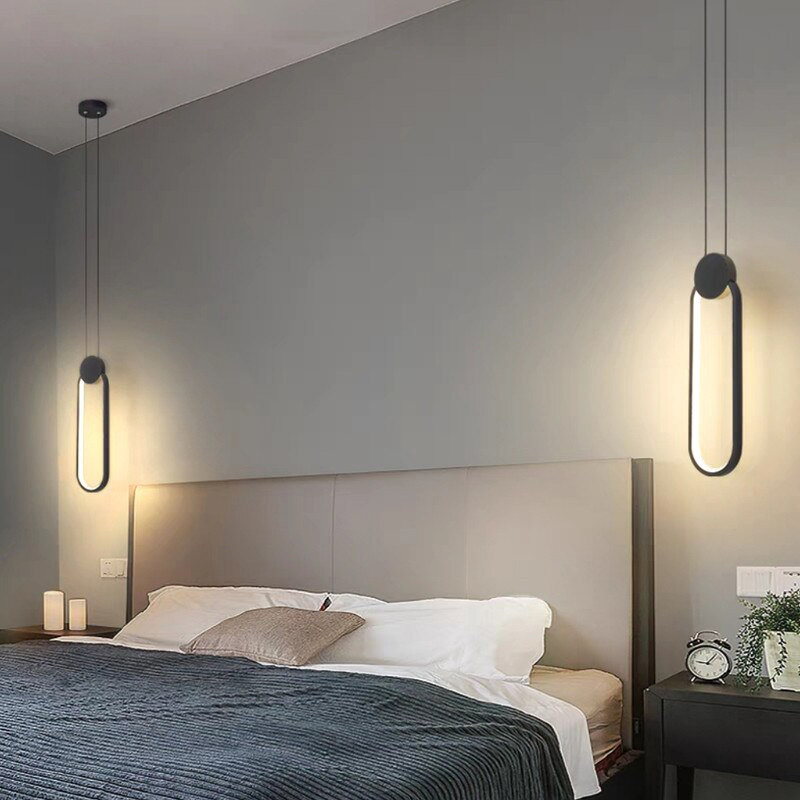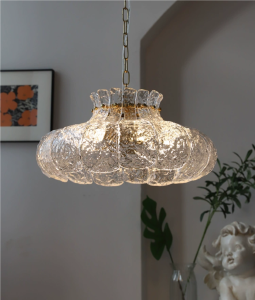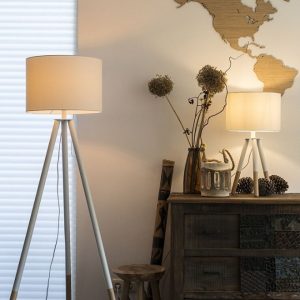
Light Up Your Bedroom: A Guide to Choosing the Perfect Lighting
Lighting plays a crucial role in creating a comfortable and inviting atmosphere in any room, but it is especially important in the bedroom. The right lighting can enhance the overall design of the space, create a relaxing ambiance, and even improve your sleep quality. In this article, we will explore the different aspects of bedroom lighting and provide tips on how to choose the right fixtures, bulbs, and color temperature for your needs. We will also discuss the benefits of using dimmer switches, the concept of layering lighting, and the importance of task and accent lighting. Additionally, we will explore energy-efficient lighting options and provide maintenance tips for your bedroom lighting fixtures.
Key Takeaways
- Lighting plays a crucial role in creating a comfortable and relaxing atmosphere in your bedroom.
- Different types of lighting fixtures, such as ceiling lights, table lamps, and wall sconces, can be used to create a layered lighting effect.
- Choosing the right bulbs, such as LED or CFL, can help save energy and reduce your electricity bill.
- Dimmer switches can be used to adjust the brightness of your lights and create a cozy ambiance.
- Task lighting, such as reading lamps or desk lamps, can be used to provide focused lighting for specific activities in your bedroom.
Understanding the Importance of Lighting in Your Bedroom
The impact of lighting on mood and sleep cannot be overstated. Bright, harsh lighting can make it difficult to relax and unwind at the end of the day, while soft, warm lighting can create a cozy and soothing atmosphere. In terms of sleep, exposure to bright light in the evening can disrupt your body’s natural sleep-wake cycle, making it harder to fall asleep and stay asleep. On the other hand, dimmer, warmer lighting can signal to your body that it’s time to wind down and prepare for sleep.
In addition to its impact on mood and sleep, lighting also plays a significant role in enhancing the overall design of a bedroom. The right lighting fixtures can complement the style and theme of your bedroom, whether it’s modern and minimalist or traditional and cozy. Lighting can also be used strategically to highlight decorative features such as artwork or architectural details, adding depth and visual interest to the space.
Different Types of Lighting Fixtures to Consider
When it comes to choosing lighting fixtures for your bedroom, there are several options to consider. Ceiling lights are a popular choice as they provide general illumination for the entire room. They come in various styles such as flush mount or semi-flush mount, and can be paired with a dimmer switch for added versatility. Wall sconces are another option that can provide both ambient and task lighting. They can be installed on either side of the bed for reading or as a decorative element. Ppspp.
Table lamps and floor lamps are also common choices for bedroom lighting. They provide localized lighting and can be easily moved around to suit your needs. Table lamps are perfect for bedside tables, while floor lamps can be placed in a corner to create a cozy reading nook. Pendant lights and chandeliers are more decorative options that can add a touch of elegance and sophistication to your bedroom.
Each type of lighting fixture has its pros and cons. Ceiling lights provide overall illumination but may not offer the same level of warmth and coziness as other options. Wall sconces are versatile and can be used for both ambient and task lighting, but they may require professional installation. Table lamps and floor lamps are portable and can be easily adjusted, but they take up valuable space. Pendant lights and chandeliers add a decorative element but may require higher ceilings and more maintenance.
How to Choose the Right Bulbs for Your Bedroom
| Factors to Consider | Recommended Bulbs |
|---|---|
| Color Temperature | 2700K-3000K |
| Brightness | 400-800 Lumens |
| Dimmability | Choose bulbs labeled as “dimmable” |
| Energy Efficiency | LED bulbs with ENERGY STAR certification |
| Style and Design | Choose bulbs that match your fixtures and decor |
Choosing the right bulbs for your bedroom is just as important as selecting the right fixtures. There are several types of bulbs available, each with its own benefits. Incandescent bulbs are the traditional choice, providing warm, soft light. However, they are not energy-efficient and have a shorter lifespan compared to other options.
Compact fluorescent bulbs (CFLs) are a more energy-efficient alternative to incandescent bulbs. They use less energy and last longer, but they may take some time to reach full brightness. LED bulbs are another popular choice for their energy efficiency and long lifespan. They produce bright, focused light and come in various color temperatures.
When choosing bulbs for your bedroom, consider the level of brightness you need. For general illumination, opt for bulbs with higher lumens. For task lighting, such as reading or applying makeup, choose bulbs with a higher color rendering index (CRI) to ensure accurate color representation. Additionally, consider the color temperature of the bulbs. Warmer temperatures (around 2700-3000K) create a cozy and relaxing atmosphere, while cooler temperatures (around 4000-5000K) provide a brighter, more energizing light.
Creating Ambience with Dimmer Switches
Dimmer switches are a great addition to any bedroom as they allow you to adjust the brightness of your lighting fixtures according to your needs and mood. They provide flexibility and can create a more intimate and relaxing atmosphere. Dimmer switches can be installed on existing fixtures or incorporated into new ones.
To install a dimmer switch, you will need to turn off the power to the circuit at the breaker box. Remove the existing switch cover and disconnect the wires from the switch. Connect the wires to the dimmer switch according to the manufacturer’s instructions, making sure to match the wire colors. Once everything is connected, secure the dimmer switch in place and replace the switch cover. Turn on the power and test the dimmer switch to ensure it is working properly.
When using dimmer switches, it’s important to choose bulbs that are compatible with them. Not all bulbs are dimmable, so make sure to check the packaging or consult with a lighting professional before purchasing. LED bulbs are generally dimmable, but some may require specific dimmers for optimal performance. It’s also worth noting that dimming LED bulbs may cause them to flicker or produce a buzzing sound, so it’s important to choose high-quality bulbs and dimmers.
Tips for Layering Your Bedroom Lighting

Layering lighting is an effective technique for creating depth and visual interest in your bedroom. It involves using multiple sources of light at different levels to achieve a balanced and well-lit space. The three main layers of lighting are ambient, task, and accent lighting.
Ambient lighting provides overall illumination for the room and can be achieved with ceiling lights, wall sconces, or pendant lights. Task lighting is focused lighting that serves a specific purpose, such as reading or getting dressed. It can be provided by table lamps, floor lamps, or wall sconces. Accent lighting is used to highlight decorative features or create a focal point in the room. It can be achieved with spotlights, track lighting, or even string lights.
To effectively layer your bedroom lighting, start with the ambient layer. Install ceiling lights or wall sconces to provide general illumination for the entire room. Next, add task lighting where needed. Place table lamps on bedside tables for reading or working, and consider installing wall sconces near a vanity or dressing area. Finally, add accent lighting to highlight decorative features such as artwork or architectural details. Use spotlights or track lighting to draw attention to these elements and create visual interest.
When layering your bedroom lighting, it’s important to consider the placement and direction of each light source. Avoid placing lights directly above or behind you as this can create harsh shadows. Instead, aim for a balance of light throughout the room by placing fixtures at different heights and angles. Experiment with different combinations of fixtures and adjust their positions until you achieve the desired effect.
The Role of Task Lighting in Your Bedroom
Task lighting is an essential component of bedroom lighting as it provides focused illumination for specific activities such as reading, working, or getting dressed. It helps reduce eye strain and allows you to perform tasks more comfortably and efficiently. There are several types of task lighting fixtures commonly used in bedrooms.
Table lamps are a popular choice for bedside task lighting as they provide localized illumination that can be easily adjusted. Look for lamps with adjustable necks or shades that can be angled to direct light where you need it. Consider the height of the lamp and make sure it is tall enough to provide adequate light for reading or working in bed.
Wall sconces are another option for task lighting in the bedroom. They can be installed on either side of the bed, above a desk or vanity, or even on the headboard. Wall sconces provide focused light without taking up valuable surface space, making them ideal for smaller bedrooms. Look for sconces with adjustable arms or shades that can be positioned to suit your needs.
Floor lamps are a versatile option for task lighting as they can be easily moved around to different areas of the room. They provide localized illumination and can be used for reading, working, or even as a spotlight for artwork or decorative features. Look for floor lamps with adjustable heads or shades that can be angled to direct light where you need it.
When choosing task lighting fixtures for your bedroom, consider the type of activities you will be performing and the level of brightness you need. For reading or working, opt for fixtures with higher lumens and a higher color rendering index (CRI) to ensure accurate color representation. Additionally, consider the placement of the fixtures and make sure they are positioned at a comfortable height and angle.
Using Accent Lighting to Highlight Decorative Features
Accent lighting is a great way to enhance the design of your bedroom and draw attention to decorative features such as artwork, architectural details, or even plants. It adds depth and visual interest to the space and creates a focal point that can transform the overall look and feel of the room. There are several ways to incorporate accent lighting into your bedroom.
Spotlights are a popular choice for accent lighting as they provide focused illumination that can be directed at specific objects or areas. They can be installed on the ceiling, walls, or even on the floor to create dramatic effects. Spotlights with adjustable heads or lenses allow you to control the direction and intensity of the light, making them ideal for highlighting artwork or architectural details.
Track lighting is another option for accent lighting in the bedroom. It consists of a track that holds multiple light fixtures, which can be adjusted and positioned to suit your needs. Track lighting provides flexibility and can be used to highlight multiple objects or areas in the room. It is especially useful in larger bedrooms or rooms with high ceilings.
String lights are a more whimsical option for accent lighting. They can be hung along the walls, draped over furniture, or even wrapped around a canopy bed to create a cozy and romantic atmosphere. String lights come in various shapes and sizes, from traditional bulbs to fairy lights, and can be easily customized to suit your style and preferences.
When using accent lighting in your bedroom, it’s important to consider the placement and direction of the light. Experiment with different angles and positions to achieve the desired effect. Avoid placing lights directly above or behind objects as this can create harsh shadows. Instead, aim for a balance of light that highlights the object without overpowering it.
Energy-Efficient Lighting Options for Your Bedroom
Energy-efficient lighting is not only good for the environment but also for your wallet. It can help reduce your energy consumption and lower your electricity bills without compromising on the quality of light. There are several energy-efficient lighting options available for your bedroom.
LED bulbs are one of the most energy-efficient choices as they use up to 80% less energy than traditional incandescent bulbs. They also last significantly longer, with an average lifespan of 20,000 to 50,000 hours. LED bulbs produce bright, focused light and come in various color temperatures to suit your needs. They are also dimmable, making them a versatile option for any room.
Compact fluorescent bulbs (CFLs) are another energy-efficient alternative to incandescent bulbs. They use up to 75% less energy and last up to 10 times longer. CFLs are available in various shapes and sizes and can be used in most standard fixtures. However, they may take some time to reach full brightness and may not be dimmable.
When choosing energy-efficient lighting for your bedroom, look for bulbs with the ENERGY STAR label. ENERGY STAR-certified bulbs meet strict criteria for energy efficiency and performance, ensuring that you are getting a high-quality product. Additionally, consider the color temperature of the bulbs and choose one that suits your needs and preferences.
Choosing the Right Color Temperature for Your Bedroom Lighting
Color temperature refers to the appearance of light emitted by a bulb, ranging from warm (yellowish) to cool (bluish). It is measured in Kelvin (K) and can have a significant impact on the mood and atmosphere of a room. Choosing the right color temperature for your bedroom lighting is crucial in creating a comfortable and inviting space.
Warm color temperatures (around 2700-3000K) create a cozy and relaxing atmosphere. They mimic the warm glow of traditional incandescent bulbs and are perfect for bedrooms where you want to create a sense of comfort and tranquility. Warm light is also less likely to disrupt your sleep as it has less blue light, which can interfere with your body’s natural sleep-wake cycle.
Cooler color temperatures (around 4000-5000K) provide a brighter, more energizing light. They are often used in task lighting or areas where you need to be alert and focused, such as a home office or dressing area. Cooler light can help increase productivity and make it easier to see details, but it may not be as relaxing or soothing as warmer light.
When choosing the color temperature for your bedroom lighting, consider the activities you will be performing in the space. If you primarily use your bedroom for relaxation and sleep, opt for warmer color temperatures. If you also use your bedroom as a workspace or dressing area, consider cooler color temperatures for task lighting. Additionally, consider the overall design and style of your bedroom and choose a color temperature that complements the space.
Maintenance Tips for Your Bedroom Lighting Fixtures
Regular maintenance is essential for the longevity and performance of your bedroom lighting fixtures. Dust, dirt, and debris can accumulate on the surfaces of the fixtures and reduce their brightness and effectiveness. Here are some tips for maintaining and cleaning different types of lighting fixtures.
Ceiling lights and chandeliers should be dusted regularly to remove any buildup. Use a soft, dry cloth or a feather duster to gently wipe the surfaces of the fixtures. Avoid using water or cleaning solutions as they can damage the electrical components. If your ceiling lights or chandeliers have removable glass shades or crystals, clean them separately using a mild glass cleaner and a soft cloth.
Wall sconces can be cleaned in a similar manner to ceiling lights. Use a soft, dry cloth or a feather duster to remove any dust or debris from the surfaces of the fixtures. If the sconces have glass shades, remove them and clean them separately using a mild glass cleaner and a soft cloth. Make sure to turn off the power to the fixtures before cleaning to avoid any accidents.
Table lamps and floor lamps should be dusted regularly to keep them looking their best. Use a soft, dry cloth or a feather duster to gently wipe the surfaces of the lamps. If the lampshades are fabric, they can be vacuumed using a brush attachment or gently wiped with a damp cloth. For lampshades made of delicate materials such as silk or parchment, it is best to use a soft brush or a lint roller to remove any dust or debris. Avoid using water or cleaning solutions on these types of lampshades, as they may cause damage. Additionally, make sure to unplug the lamps before cleaning and avoid getting any electrical components wet.


